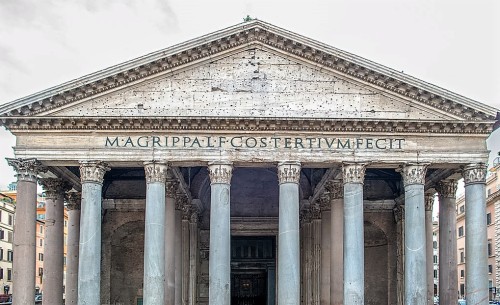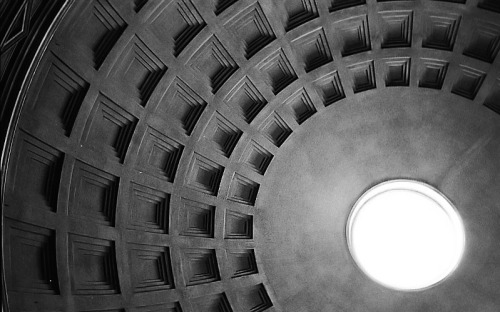Terracotta Panathenaic Prize Amphora


Terracotta Panathenaic prize amphora
Attributed to a painter of the Kittos group
Attica, Greece, Classical Period, c. 366/5 B.C.
Metropolitan Museum of Art
More Posts from Novato-curioso-blog and Others
via #NASA_APP
Solo por el placer de disfrutar un hermoso paisaje.

Tumbler Ridge
La maravillosa construcción romana. No deja de sorprenderme y maravillarme.


The Pantheon in Rome | 2nd Century AD
via #NASA_APP
Por favor aprecien esta maravilla. Gracias a nuestro amigo de thetimeandspaceblog por ayudarnos a conocer y recopilar esta valiosa información. De verdad es hermoso nuestro Universo y lo que nos falta por conocer y entender.!!

What causes the structure in Comet Lovejoy’s tail? As the name implies, the ion tail is made of ionized gas – gas energized by ultraviolet light from the Sun and pushed outward by the solar wind. The solar wind is quite structured and sculpted by the Sun’s complex and ever changing magnetic field. The effect of the variable solar wind combined with different gas jets venting from the comet’s nucleus accounts for the tail’s complex structure. Following the wind, structure in Comet Lovejoy’s tail can be seen to move outward from the Sun even alter its wavy appearance over time. The blue color of the ion tail is dominated by recombining carbon monoxide molecules, while the green color of the coma surrounding the head of the comet is created mostly by a slight amount of recombining diatomic carbon molecules. The featured three-panel mosaic image was taken from the IRIDA Observatory in Bulgaria.
Object Names: Comet C/2014, Comet Lovejoy
Image Type: Astronomical
Credit: Vladimir Popov, Emil Ivanov (IRIDA Observatory)
Time And Space
Maravilloso!!!

Sculpted by stellar winds and radiation, the star factory known as Messier 17 lies some 5,500 light-years away in the nebula-rich constellation Sagittarius. At that distance, this 1/3 degree wide field of view spans over 30 light-years. The sharp composite, color image, highlights faint details of the region’s gas and dust clouds against a backdrop of central Milky Way stars. Stellar winds and energetic light from hot, massive stars formed from M17 stock of cosmic gas and dust have slowly carved away at the remaining interstellar material producing the cavernous appearance and undulating shapes. M17 is also known as the Omega Nebula or the Swan Nebula.
Object Names: Omega Nebula/ Swan Nebula/ M17
Image Type: Astronomical
Credit: ESO/ MPIA/ OAC
Asembly: R. Colombari
Time And Space
Bello!!

Baltic Sea, Sopot, Poland
Viva Polonia

RIO2016: Maria Andrejczyk finishes 4th in Athletics - Women’s Javelin Throw. #TeamPoland #POL
Hermoso!!!

Antoine Calbet - Ondines
Ohhhh yo quiero una casa en un árbol como esta!!!!!

Tree House | Instagram | Facebook
-
 beastliness liked this · 10 months ago
beastliness liked this · 10 months ago -
 gibbetsandcrows1798 liked this · 10 months ago
gibbetsandcrows1798 liked this · 10 months ago -
 mohabbvt reblogged this · 10 months ago
mohabbvt reblogged this · 10 months ago -
 younghuron liked this · 10 months ago
younghuron liked this · 10 months ago -
 ca1iban liked this · 10 months ago
ca1iban liked this · 10 months ago -
 23rdcenturygirl reblogged this · 10 months ago
23rdcenturygirl reblogged this · 10 months ago -
 memoriesofthingspast reblogged this · 10 months ago
memoriesofthingspast reblogged this · 10 months ago -
 memoriesofthingspast liked this · 10 months ago
memoriesofthingspast liked this · 10 months ago -
 skvwar liked this · 10 months ago
skvwar liked this · 10 months ago -
 hyperions-fate reblogged this · 10 months ago
hyperions-fate reblogged this · 10 months ago -
 n1ghtwo1f liked this · 5 years ago
n1ghtwo1f liked this · 5 years ago -
 jijijijijsijijijiji reblogged this · 5 years ago
jijijijijsijijijiji reblogged this · 5 years ago -
 babyhoneyangel reblogged this · 5 years ago
babyhoneyangel reblogged this · 5 years ago -
 bicherub reblogged this · 5 years ago
bicherub reblogged this · 5 years ago -
 midwesturn reblogged this · 5 years ago
midwesturn reblogged this · 5 years ago -
 rubynye liked this · 5 years ago
rubynye liked this · 5 years ago -
 weshleeep liked this · 5 years ago
weshleeep liked this · 5 years ago -
 tallitalianguy reblogged this · 5 years ago
tallitalianguy reblogged this · 5 years ago -
 tallitalianguy liked this · 5 years ago
tallitalianguy liked this · 5 years ago -
 its-hercollectionkoala reblogged this · 5 years ago
its-hercollectionkoala reblogged this · 5 years ago -
 its-hercollectionkoala liked this · 5 years ago
its-hercollectionkoala liked this · 5 years ago -
 iamdangerace liked this · 6 years ago
iamdangerace liked this · 6 years ago -
 hoppehoppereiter reblogged this · 6 years ago
hoppehoppereiter reblogged this · 6 years ago -
 iluz liked this · 6 years ago
iluz liked this · 6 years ago -
 bernar444 liked this · 6 years ago
bernar444 liked this · 6 years ago -
 eyestop liked this · 6 years ago
eyestop liked this · 6 years ago -
 eyestop reblogged this · 6 years ago
eyestop reblogged this · 6 years ago -
 mulgarath reblogged this · 6 years ago
mulgarath reblogged this · 6 years ago -
 aliai-miriam-c liked this · 6 years ago
aliai-miriam-c liked this · 6 years ago -
 ljutefisk liked this · 6 years ago
ljutefisk liked this · 6 years ago -
 110car8s liked this · 6 years ago
110car8s liked this · 6 years ago -
 megadimos reblogged this · 6 years ago
megadimos reblogged this · 6 years ago -
 bluehome91 reblogged this · 6 years ago
bluehome91 reblogged this · 6 years ago -
 bluehome91 liked this · 6 years ago
bluehome91 liked this · 6 years ago -
 rogerparkinson liked this · 6 years ago
rogerparkinson liked this · 6 years ago -
 goodnesstruthandbeauty reblogged this · 6 years ago
goodnesstruthandbeauty reblogged this · 6 years ago -
 piranesis-interior-decorator liked this · 6 years ago
piranesis-interior-decorator liked this · 6 years ago -
 menelaos reblogged this · 6 years ago
menelaos reblogged this · 6 years ago -
 magicofthepiper liked this · 6 years ago
magicofthepiper liked this · 6 years ago